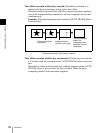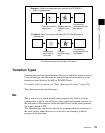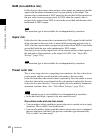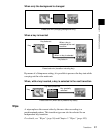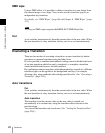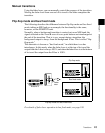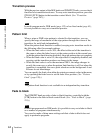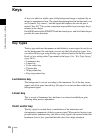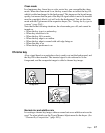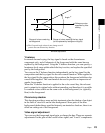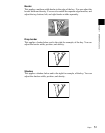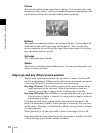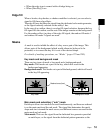
Chapter 1 DVS-9000 Functions
46
Keys
Keys
A key is an effect in which a part of the background image is replaced by an
image or superimposed text. The signal determining how the background is cut
out is termed “key source,” and the signal that replaces the cut-out part is
termed “key fill.” The system component responsible for processing a key is
referred to as a keyer.
Each M/E bank and the PGM/PST bank has four keyers, and all of these keyers
provide the same functions.
Key Types
The key type indicates the manner in which the key source signal is used to cut
out the background. In each bank, you can use the following key types. You
can select the key type using the key type selection buttons in the key control
block, or by a setting in the Type menu for the keyer. (See “Key Type Setting”
(page 263).)
• Luminance key
• Linear key
• Color vector key
• Chroma key
• Wipe pattern key
• Key wipe pattern key
Luminance key
The background is cut out according to the luminance (Y) of the key source
signal, and at the same time the key fill signal is cut out and then added to the
background signal.
Linear key
This is a type of luminance key, but there is a reduced variability in gain,
allowing more precise adjustment.
Color vector key
The key signal is created from a combination of the luminance and
chrominance components of the key source signal. When perfect keying is not
possible with a luminance key, this allows a key signal to be created even if the
luminance level is low, provided that the colors have high saturation.



